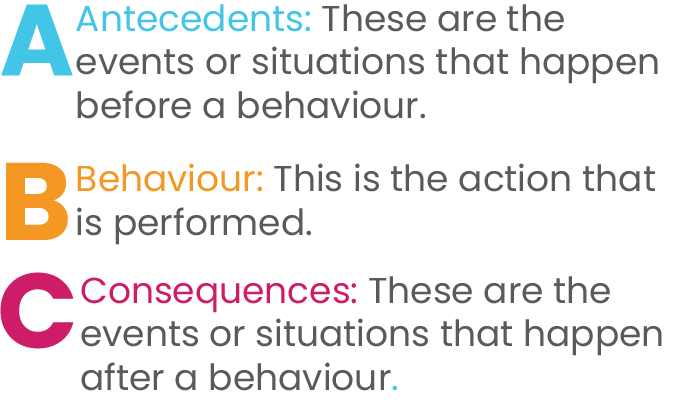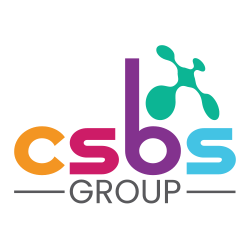ABC Model of Behaviour
Most workers who support people with disability will have come across the ABC Model of Behaviour at some point in their work life. Many workers that I speak to about ABC, hear the terminology and immediately think of it as a simple recording tool, when in fact it is so much more.
Before we get into the ‘so much more’, let’s quickly unpack the ABC initialism; A = Antecedent, B = Behaviour, C = Consequences.
In clearer terms, the model breaks down behaviour into three components.
Antecedents: These are the events or situations that happen before a behaviour.
Behaviour: This is the action that is performed. (e.g. the ‘behaviour’)
Consequences: These are the events or situations that happen after a behaviour.
The ABC Model of Behaviour was developed in the 1950s by the American psychologist Albert Ellis as a method of behaviour-based therapy. Today, it is widely used in various settings by psychologists and clinicians to understand and modify behaviour.
This may come as a surprise for some workers whose only exposure to the ABC model is as a recording tool because most (if not all) ABC Behavioural Data Forms are literally used to record a person’s data before (Antecedent), during (Behavioural), and after (Consequence) a behaviour.
It is, however, so much more…
The ABC Model of Behaviour, while simple, is a powerful tool that is used to understand and change behaviour. It provides us with a means to analyse the events (also called setting events) leading to a behaviour, as well as the events that may make it more likely for a behaviour of concern to re-occur.
The ABC Model of Behaviour is used to identify the factors that might exert influence on the behaviour, and by changing or removing the influence, it is hoped that the end-product will be a happier change in behaviour. I say hoped, because behaviour supports is not an exact science, and the ABC model does not record the other factors that will inevitably influence behaviour – for instance, a person’s history, disability, life experiences and skills.
What the model does do, is give us the data to build a picture about the person within different environments that is more or less predictive, increasing our ability to predict when and why certain behaviours of concern may occur.

Let’s look at the components of the model.
Antecedents are the events or situations that come before a behaviour. They can be internal (thoughts, feelings, or emotions) or external (people, places, or things). Antecedents can trigger a behaviour in a number of ways (refer to my blog, What Triggers You?); A child may be more likely to hit when they are feeling angry or frustrated.
Behaviour is the action that is performed. It’s observable by one or more people (hitting, running, or talking).
Consequences are the events or situations that come after a behaviour. Consequences can increase or decrease the likelihood of behaviour occurring in the future.
Using the ABC Model to Change Behaviour
The ABC model can be used to understand and change behaviour in a number of ways. Here are some examples:
Identifying antecedents: By identifying the antecedents of a behaviour, we can start to understand what is triggering the behaviour. This can help us to develop strategies for avoiding or managing those triggers.
Changing consequences: By changing the consequences of a behaviour, we can change the likelihood that the behaviour will occur again in the future. If we want to increase the likelihood that a child will share, we can give them a positive consequence for sharing, such as a sticker or a hug.
Teaching new behaviours: The ABC model can be used to teach new behaviours. By identifying the antecedents and consequences of a desired behaviour, we can develop strategies for teaching the person how to perform that behaviour.
The ABC model is a versatile tool that can be used to understand and assist us to change behaviour in a variety of settings. This simple yet effective model can be used by anyone who is interested in learning more about behaviour, including their own.
Brett Fitzsimmons
CSBS – Behaviour Support Practitioner
Let’s talk about how we can be part of your story.
Supports we offer
Why choose CSBS
CSBS Connect – Access support information in real time.
CSBS is a NDIS Registered Provider – what that means for you.
About CSBS
Registered NDIS Provider No: 4050093808 - Complex Supports Bespoke Solutions
Contact Us
Level 1, 673-679 David Low Way, Mudjimba, QLD 4654
1300 18 11 88
